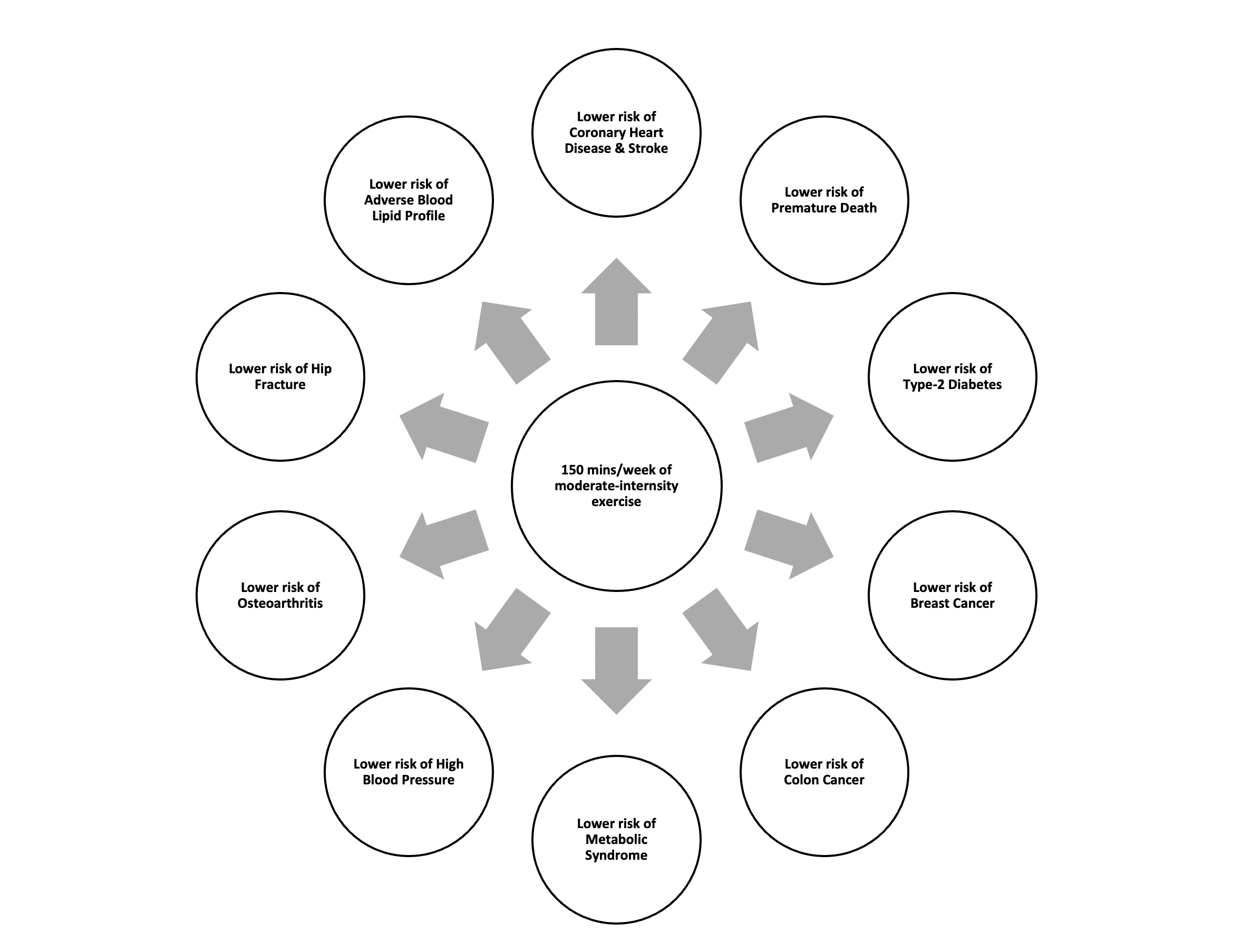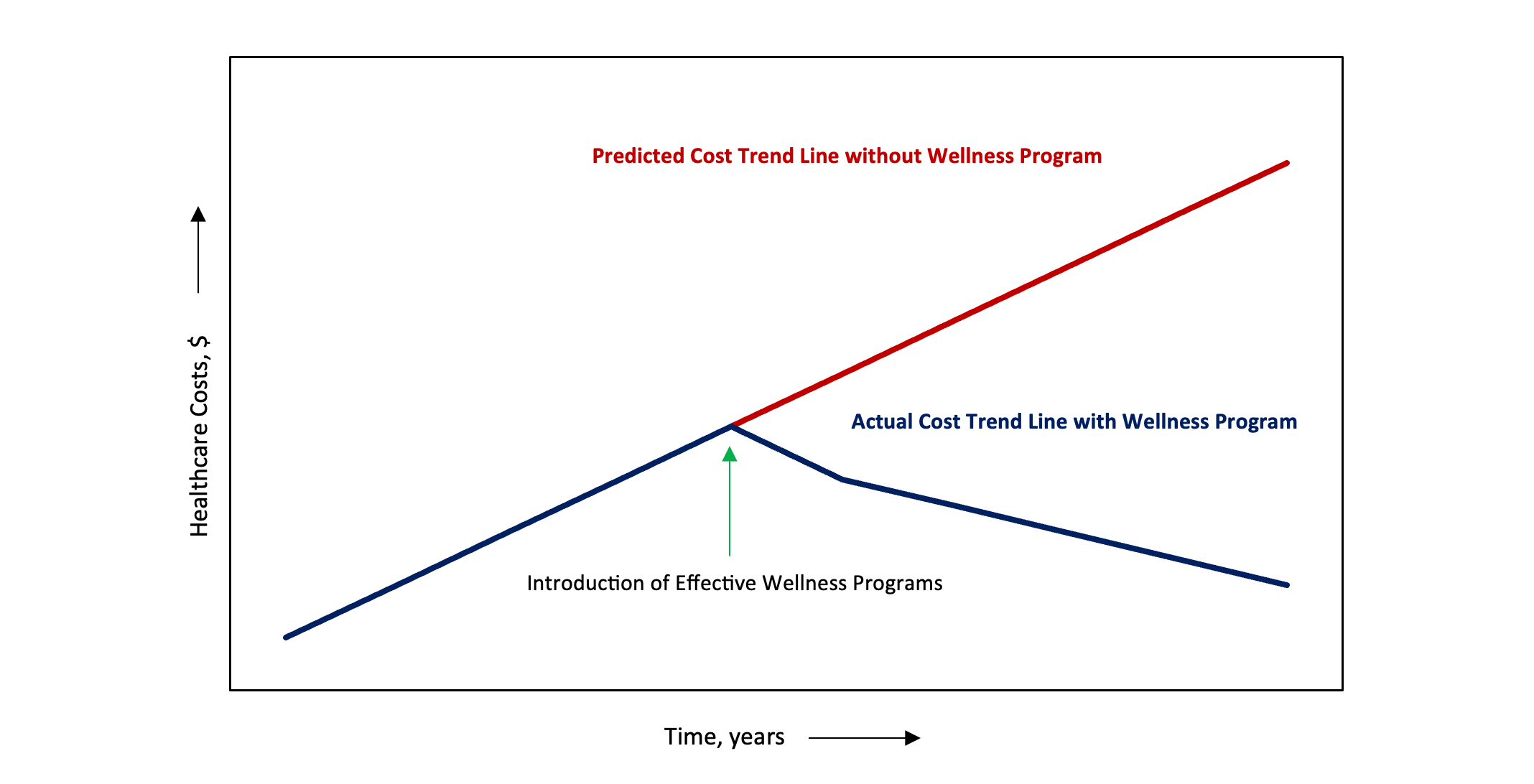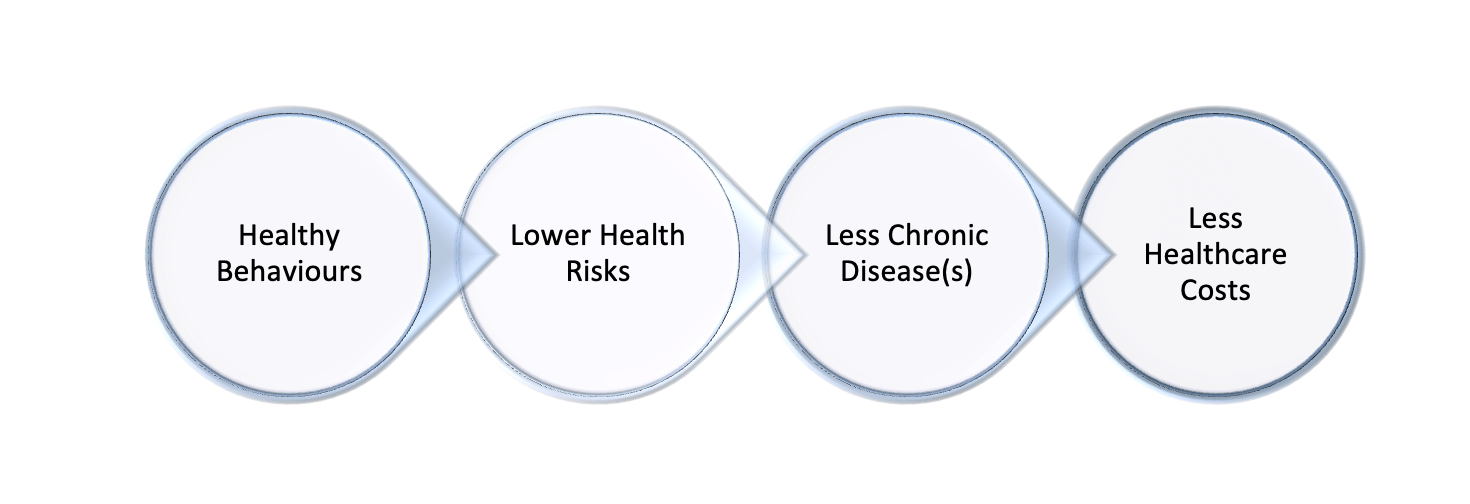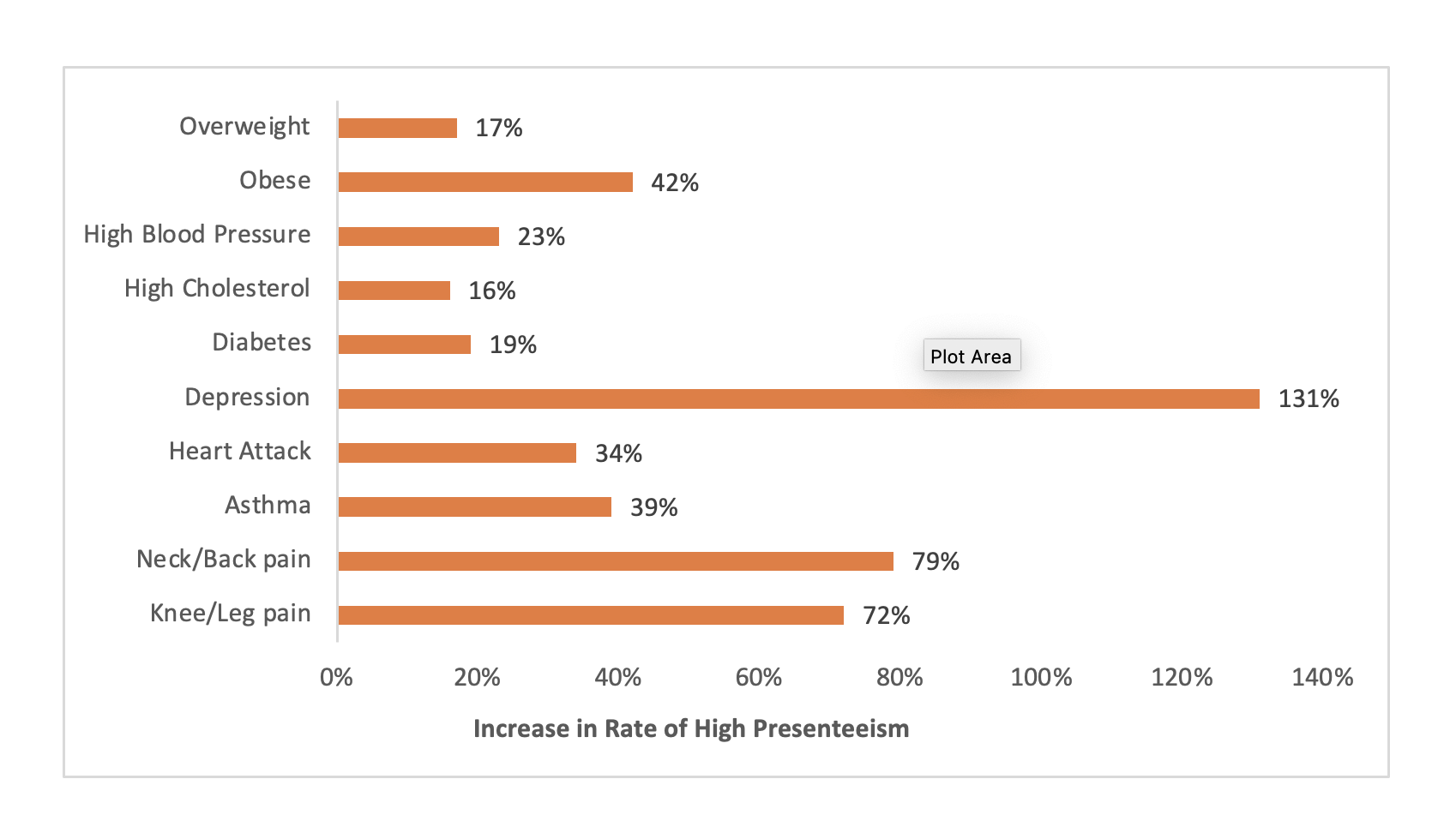Why Pursue Health & Wellness?
FEBRUARY 23, 2023
Part A | Personal Benefits of a Lifestyle Founded on Wellness
Adopting a wellness lifestyle yields benefits that accrue, and accumulate, at the individual level, societal level as well as the planetary level. For instance, speaking at an individual level of analysis, inculcation of health and wellness practises has the following robustly researched and medically proven salutary effects.
(1) Reduced Risk of Premature Death and Chronic Diseases
Strong medical evidence indicates that a total amount of 150 minutes (2 hours 30 minutes) per week of moderate-intensity physical activity consistently, and significantly, reduces the risk of premature / early death (i.e., dying earlier than the average age of death for a specific population group) and many other chronic diseases including but not limited to :
Breast Cancer
Type-2 Diabetes
Coronary Heart Disease & Stroke
Colon Cancer
Metabolic Syndrome
High Blood Pressure
Hip-Fracture
Osteoarthritis
Adverse Blood Lipid Profile
Moreover, the mitigative effects of wellness on premature death and the aforementioned (non-exhaustive list of) chronic diseases applies to populations of all ages, race, sex, ethnicity, persons with disabilities and persons with abilities.

Figure 2: Mitigative Effects of 150 minutes per week of Moderate-Intensity Exercise
(2) Improved Emotional and Mental Well-being
Wellness practices (such as mindfulness and exercise) have been clearly shown to have a materially positive impact on mood, sense of well-being and overall quality of life. For instance :
| Post Traumatic Stress Disorder (PTSD) & Trauma Management | Numerous studies evidence the fact that holistic wellness practices have a significantly salutary effect on PTSD and Trauma Management |
| Alleviation of Depression | Exercise has been medically shown to increase the brain’s sensitivity for the hormones serotonin and norepinephrine, which relieves feelings of mild to moderate depression. |
| Pain Perception & Mood Elevation | Exercise can promote the production of endorphins which, in turn, elevates positive feelings and mood states whilst simultaneously reducing the perception of pain. |
| Improved Brain Function and Health | Holistic wellness enhances brain health, prevents cognitive decline (i.e., age related decline in thinking, learning, memory and judgment skills, including Dementia and Alzheimer’s disease) and improves mental focus and concentration |
| Improved Sleep Quality | Scientific research has definitively established the link between regular exercise and improved quality of sleep – including the alleviation of insomnia. |
| Improved Sexual Health | In both males & females, regular exercise has been shown to boost sex drive and sexual performance through the action of both psychological & physiological adaptations. For instance, regular exercise has been linked with significant improvement in sexual function and desire in postmenopausal & polycystic ovary syndromatic females. Meanwhile, in males, regular exercise can both significantly improve erectile function and reduce erectile dysfunction. |
| Self Esteem & Confidence Boost | Wellness practices (such as mindfulness and exercise) are investments which require commitment & discipline. The pay-off from forging such consistent habits, and achieving even modest wellness goals, is measured in an increased sense of self-worth, self-confidence, self-awareness, mental / emotional resilience and an empowering sense of self-achievement. |
Table depicting Emotional and Mental Well-being Effects of Wellness
(3) Weight Reduction, Beautification and Aging Well
Results from the scientific literature presents unequivocable evidence that regular wellness practice (such a proper nutrition, hydration, physical exercise, rest and stress management) is strongly coincident with a healthy metabolism, fat loss maximisation, maintenance of a healthy body mass, and promotion of musculoskeletal health.
Moreover, moderate-intensity physical activity (and other protocols such as adequate hydration) can provide antioxidant protection, and promote blood-flow, sufficient to protect one’s skin, add sparkle / radiance to one’s complexion, delay the signs of aging and promote youthfulness.
(4) Improved Immune System Function and Energy Levels
Adoption of regular wellness practices and behaviours (such as forming healthy eating habits, adhering to a regular exercise regime, pursuing positive mental health, engaging in altruistic activities etc.) has been medically proven to significantly boost the immune system and suppress / combat the onset of ailments connected to various viruses (such as coronaviruses) and bacteria.
In addition, mindfulness, physical exercise and proper nutrition all aid in the augmentation of both muscular and cardiovascular system health (i.e., heart and lung health). This translates into increased strength and endurance and the concomitant reduction in feelings of fatigue. In fact, physical activity (in particular) has been demonstrated to boost energy levels for people with Chronic Fatigue Syndrome (CFS) and other serious illnesses .
Part B | Corporate Benefits of Workplace Wellness
Personnel are unarguably the most important asset and resource of any organisation. Over successive years, businesses have increasingly come to appreciate the beneficial impact of a healthy working environment on the welfare, engagement and productivity of their staff. Moreover, such welfare and productivity gains for workers have been clearly shown to correlate with increased organisational performance and shareholder value maximisation.
In fact, the fecundity of academic literature on the subject shows that robust investment in effective workplace health and wellness programs is a common and salient feature of high-performing and well managed companies. For instance, a recent (and seminal) study showed that, over a six-year period, the stock value for a portfolio of companies that received high scores in corporate health and wellness assessment appreciated by 235% compared with the S&P 500 index which appreciated by 159% . Such data graphically illustrate the positive financial rationale for firms to invest in effective workplace wellness. Such cumulative financial gains can be decomposed into the following constituent parts.
(1) Wellness Programs Reduce Organisational Healthcare Costs
Healthcare is one of the largest and most notoriously difficult categories of expense to control. Over 100 different financial studies provide irrefutable evidence that comprehensive wellness programs which improve health behaviours (such as eating healthier foods, exercising more often, controlling / managing stress, smoking and drinking less etc) reliably achieve a significant bending of the healthcare cost trend line (see Figure 3).

Figure 3: Illustrating the Impact of Effective Wellness Programs on Healthcare Costs Trendline Over Time (informed by (a) Forrester Research Inc., “The Total Economic Impact of Virgin Pulse: Costs Savings & Business Benefits Enabled by the Engage Platform.”, February 2020 (b) http://wellsteps.com)
The reason for the seen reduction in healthcare costs is linear in nature as per Figure 4.

Figure 4: Depicting Healthy Behaviours to Lower Healthcare Costs Causal Chain.
In terms of Return on Investment (ROI), researchers from Harvard University recently published a summary of the literature regarding the connection between wellness programs & healthcare costs. The Harvard publication (which focused on wellness programs lasting an average of 3 years) showed a mean ROI of 3.27 or, in percentage term, 327%. In other words, for every dollar spent on wellness programs, a company saved $3.27 due to reduced healthcare costs .
Note: the occasional lunch, perfunctory learning about nutrition and/or intermittent biometric screening do not by themselves constitute “comprehensive wellness programs” and, thus, will not be enough to move the healthcare costs needle.
(2) Wellness Programs Improve Organisation wide Productivity
Wellness programs that focus on helping employees have good health behaviours positively impact organizational productivity in two ways
I. Reduction in Presenteeism: presenteeism can be defined as the phenomenon of physically being at work but not working. One of the main causes of presenteeism is poor health. It is estimated that the costs associated with presenteeism is at least 2 to 3 times greater than direct healthcare expenses.
Numerous scientific studies have established the prevalence of high presenteeism rates in employees with poor health behaviours (such a smoking, poor dietary habits and lack of exercise) versus employees with more salutary health behaviours.
At a deeper level of analysis, poor health behaviours eventually lead to elevated health risks and chronic disease(s). Perhaps unsurprisingly, the empirical evidence shows that the incident of high presenteeism rates is markedly more pronounced in the employee population with elevated health risks and chronic diseases (such as excess bodyweight, high cholesterol, chronic depression, elevated blood pressure, neck/back pain etc) than the employee population without such health risks and chronic disease(s).

Figure 5: Depicting Percentage Rate of High Presenteeism for Employee Population Group with Various Elevated Health Risk and Chronic Diseases Compared Against Employee Population Group without such Conditions (informed by http://wellsteps.com)
Thus, unhealthy lifestyle choice may result in substantially higher levels of lost productive work time. Consequentially, wellness programs that improve lifestyle behaviours will invariably reduce presenteeism and promote productivity.
II. Reduction in Absenteeism: employee absenteeism (i.e., time-out-of-work) is another key variable with a bearing on productivity. A variety of studies have evidenced the fact that employees with good health behaviours and lower health risk profiles exhibit less absenteeism and are, therefore, less of a channel for productivity loss to organisations.
As a result, well designed workplace wellness programs have the ability to improve employee health, reduce absenteeism and thus enjoy cost savings derived from the avoidance of productivity losses.
Harvard researchers, examining the ROI of wellness programs as they relate to absenteeism, showed a wellness program ROI of 2.73 or (in percentage terms) 273%. In other words, for every dollar spent on wellness, the company saved $2.73 and reduced absenteeism .
(3) Wellness Programs Improve Employee Retention
The academic literature proffers a robust link between effective wellness programs and a firm’s ability to retain employees and, therefore, avoid the associated attritional personnel costs (such as costs of recruiting, hiring and training employees).
In today’s hyper-competitive job market, organisations are continuously searching for ways to both attract and retain employees. Expectations (on the part of employees) have evolved well beyond good financial compensation and a rich benefits package. In the modern environment, sincere engagement and a company’s cultural bona fides with respect to staff wellbeing are all salient factors in employees’ considerations regarding joining and/or remaining in an organization.
(4) Wellness Programs Improve Employee Morale and Increases Company Earnings
Even more important than helping employees become physiologically healthier, wellness programs help employees become happier and more engaged.
Research provides clear evidence that happier and more engaged employees (who are wiling to go above and beyond their job descriptions) have a positive downstream effect on both customer satisfaction / experience and reduction in absenteeism.
A review of the scientific literature suggests that a least 35% of customer satisfaction / experience stems from employee engagement. Furthermore, such studies also establish a tight positive correlation between customer satisfaction / experience and organizational turnover (a mere 1% increase in customer experience is capable of delivering a substantial increase in company revenues) .
The inescapable conclusion being that improved employee morale and experience are phenomena that directly impact on overall organizational performance and the maximation of shareholder value.


